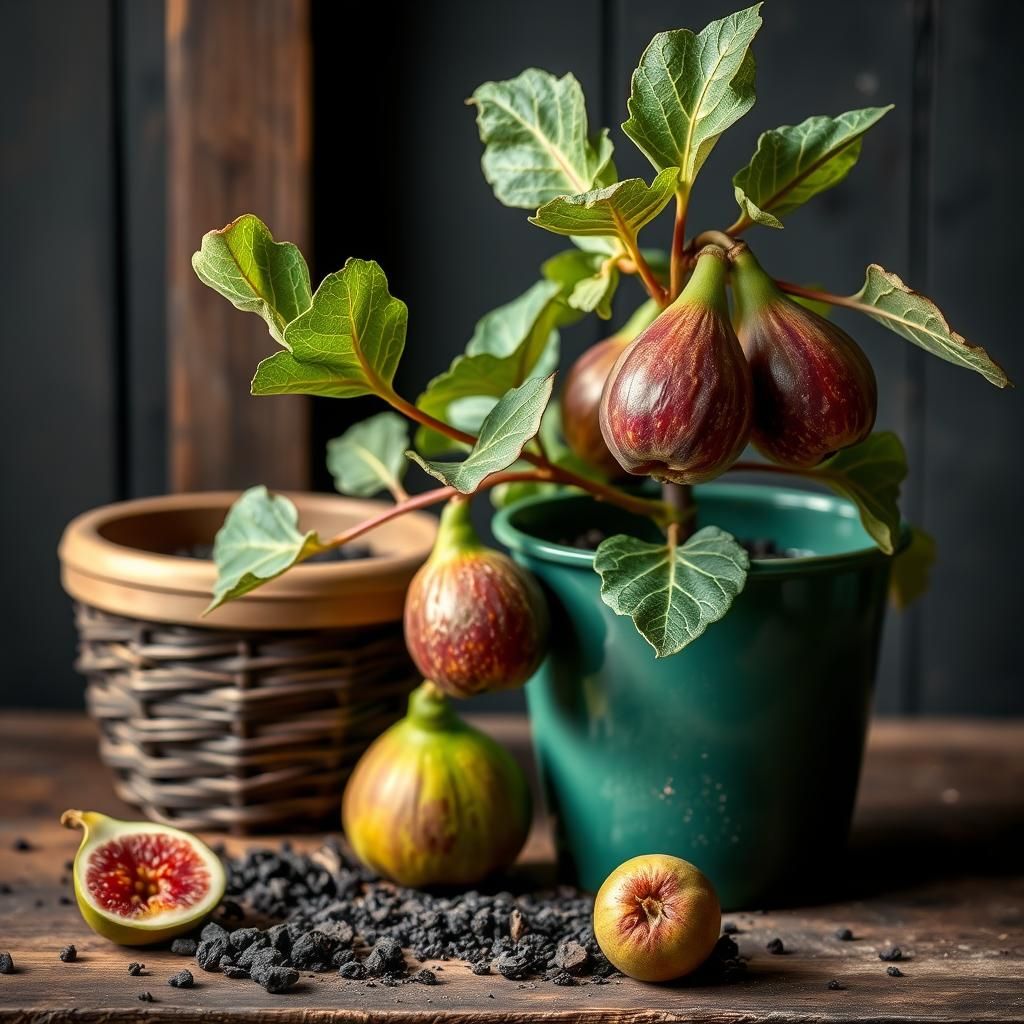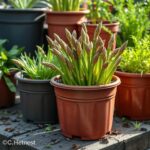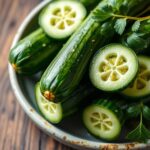The Ultimate Guide to Planting Fig Tree in Container: Tips and Tricks for Success

Growing a fig tree in a container can be a rewarding and fruitful endeavor, especially for those with limited garden space. Figs are not only delicious but also visually appealing, making them an attractive addition to any patio or balcony. However, successfully cultivating a fig tree in a pot requires specific knowledge about the best practices and techniques. This ultimate guide will provide you with essential tips and tricks for planting and caring for your container-grown fig tree, ensuring it thrives and produces luscious fruit. From soil selection to watering and sunlight requirements, you'll have everything you need for success.
Tips for Successfully Planting a Fig Tree in a Container
Planting a fig tree in a container is an excellent way to enjoy fresh figs even in limited spaces, such as balconies or small gardens. It allows for greater control over the tree's environment, including soil quality, drainage, and sunlight exposure. When selecting a container, choose one that is at least 18-24 inches in diameter to accommodate the tree's root system. Use high-quality potting soil that provides excellent drainage, and make sure the container has drainage holes to prevent root rot. Additionally, place the pot in a location that receives at least 6 hours of sunlight daily, and water the tree consistently, allowing the top inch of soil to dry out between watering sessions. With the right care, a container-grown fig tree can thrive and yield delicious fruit.
Selecting the Right Container
Choosing the appropriate container is vital for the success of your fig tree. Opt for a pot made of durable materials like ceramic, terra cotta, or heavy-duty plastic, as these provide insulation to the roots. Ensure the container has enough space for growth; a diameter of 18-24 inches is recommended for young trees, while mature fig trees may require larger pots. Furthermore, ensure that the container is at least 12 inches deep to accommodate the root system and promote healthy growth.
Soil Requirements for Fig Trees
When planting a fig tree in a container, the right soil mix is crucial. Use a high-quality, well-draining potting mix that contains components like peat moss, perlite, or coconut coir. This blend will retain adequate moisture while preventing the soil from becoming waterlogged. You can also add organic compost to enrich the soil with nutrients, which is vital for healthy growth and fruit production.
Watering Guidelines
Watering is essential for maintaining the health of your container-grown fig tree. It’s important to keep the soil consistently moist, but not soggy, as this can lead to root rot. Water the tree thoroughly until you see excess water draining from the bottom of the container, then allow the top inch of soil to dry out before the next watering. During hot summer months, you might need to check the soil moisture more frequently, as container plants can dry out quickly.
See also:
Sunlight and Temperature Needs
Fig trees thrive in full sun, requiring at least 6-8 hours of direct sunlight daily for optimal growth. Position your container in a bright location, such as a southern or western-facing patio. Additionally, fig trees prefer warmer temperatures, ideally between 60°F to 75°F. If you live in an area with cold winters, consider bringing the pot indoors or to a sheltered area to protect it from frost damage.
Fertilizing Your Fig Tree
Regular fertilization is necessary to provide essential nutrients for your fig tree's growth. Use a balanced, slow-release fertilizer in the early spring when new growth begins. A formula with an N-P-K ratio of approximately 10-10-10 is suitable. Avoid over-fertilizing, as this can lead to excessive leaf growth at the expense of fruit production. Generally, fertilize your fig tree every 4-6 weeks during the growing season for best results.
| Aspect | Recommendation |
|---|---|
| Container Size | 18-24 inches in diameter |
| Soil Type | Well-draining potting mix with organic compost |
| Sunlight | 6-8 hours of direct sunlight daily |
| Watering Frequency | When top inch of soil is dry |
| Fertilization | Every 4-6 weeks during growing season |
Choosing the Right Container for Your Fig Tree
When planting a fig tree in a container, it is essential to select the right size and material of the container to ensure optimal growth and health. A large container, with a minimum depth of 18 inches and a width of at least 24 inches, allows the roots to spread and absorb nutrients effectively. Drainage is crucial, so choose a pot with holes at the bottom to prevent waterlogging, which can lead to root rot. Materials like terra cotta or wood are excellent because they provide good insulation and breathability, helping regulate the soil temperature and moisture levels. Always consider the weight of the container, especially if you plan to move it indoors during colder months.
Understanding Fig Tree Varieties
Different varieties of fig trees can affect your choice of container and care methods. Some popular varieties for container growth include Brown Turkey, Celeste, and Kadota, each with unique characteristics and sizes. Dwarf varieties are ideal for smaller spaces, while larger varieties may require more spacious containers or even pruning to manage their size. Understanding your fig tree's specific growth habits and requirements allows you to tailor your care for successful fruit production.
Soil Mix Recommendations
Choosing the right soil mix is fundamental for healthy fig trees in containers. A well-draining potting mix combined with organic matter, such as compost or peat moss, provides the necessary nutrients while maintaining moisture levels. Aim for a pH level between 6.0 and 6.8, as figs prefer slightly acidic to neutral soil. Incorporating perlite or sand can improve drainage, which is essential for preventing the roots from becoming waterlogged and ensuring that your fig tree thrives.
See also:
Watering Techniques for Container-Grown Fig Trees
Proper watering is crucial for the health of your container-grown fig tree. Fig trees thrive with thorough yet infrequent watering; allowing the top inch of the soil to dry out before the next watering encourages deeper root growth. During the growing season, check the soil moisture regularly, especially in hot weather, and adjust your watering frequency as necessary. Overwatering can lead to root rot, while underwatering can stress the plant, leading to reduced fruit quality and yield.
Fertilizing Your Fig Tree Effectively
To promote healthy growth and fruit production, a balanced fertilizer should be applied during the growing season. A 10-10-10NPK fertilizer is ideal, but organic options like worm castings or fish emulsion can also be effective. Fertilizing should occur every 4-6 weeks from early spring until late summer, following the instructions on the fertilizer package. Reducing or stopping fertilization in the fall allows your fig tree to prepare for dormancy during the winter months.
Pruning Techniques for Container Fig Trees
Pruning is an essential maintenance task for container-grown fig trees, as it promotes a manageable shape and encourages better fruit production. You should prune during the dormant season, typically in late winter, removing any dead or crossing branches to improve air circulation. This helps reduce the risk of disease and enhances sunlight penetration, which is vital for fruit ripening. Aim to maintain an open center, allowing for easy access to sunlight and improving overall plant health.
Questions from Our Readers
Can I plant a fig tree in a container?
Yes, you can definitely plant a fig tree in a container. In fact, growing fig trees in containers is a popular method as it allows for easier mobility and can be ideal for those with limited yard space. Just ensure that the container is large enough to accommodate the tree’s root system and has good drainage.
What size container do I need for a fig tree?
For a fig tree, it's recommended to use a container that is at least 15 gallons in size to provide sufficient space for growth. This size helps to ensure that the roots have enough room to expand while also retaining adequate moisture and nutrients.
See also:
How often should I water a fig tree in a container?
A fig tree in a container generally requires consistent watering, especially during warmer months. You should check the soil moisture regularly, and it’s best to water when the top inch of the soil feels dry. Aim to keep the soil evenly moist but not soggy to promote healthy growth.
What type of soil should I use for a fig tree in a container?
The ideal soil for a fig tree in a container is a well-draining potting mix that retains some moisture but allows excess water to escape. Mixing in materials like perlite or coconut coir can enhance drainage and provide the necessary nutrients for the fig tree to thrive.

If you want to read more articles like The Ultimate Guide to Planting Fig Tree in Container: Tips and Tricks for Success, we recommend you check out our Pots category.
Leave a Reply
Related Articles